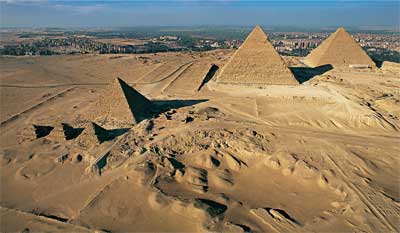|
FOR IMMEDIATE RELEASE
1/10/2007: SEARCHING IMAGES BY CONTENT: THE MET (MULTILINGUAL EGYPTOLOGICAL THESAURUS)
The "Quick Search" box on the Giza website is a handy tool for searching across most fields in the Giza online database. But have you ever wished to search Giza photography by the content of the images? If you are researching, for example, tomb wall scenes of female musicians, then a descriptve photo caption suchs as "Tomb G 2180, south wall" will be of little use.
But now, thanks to the implementation of "Multilingual Egyptological Thesaurus" (MET) terminology, users may locate almost any image on the Giza website according to the thematic content shown. The MET applies to two-dimensional wall scene photos, as well as three-dimensional object photos. This is a powerful tool for highly specialized topical research.
How does it work? Simply go to the Advanced Search page and click on "Advanced Search for Photos." Click on one of the "Choose term..." category boxes and the resulting pop-up window contains hierarchical lists you can select; or just type the term in yourself. You can add as many terms as you wish across the various categories. Click the "Search" box and the website will retrieve all the images requested.
Every found image window also displays its entire list path of related thesaurus terms as clickable links. For example, a search for scenes of monkeys may return image "A6625_NS." All related thesaurus terms for this photo are also displayed, so users may veer off onto any research tangent of interest:
| MET 02 : Architectural unit / Tomb/mastaba/pyramid : Chapel |
| MET 02 : Architectural element : Wall |
| MET 05 : Non organic / Rock : Limestone |
| MET 08 : Attitude of arms/hands : Left hand on body |
| MET 08 : Animal : Mammal |
| MET 08 : Attitude of arms/hands : Right hand on leg |
| MET 08 : Attitude of body : Sitting |
| MET 08 : Human / Man : Tomb owner |
| MET 06 : General technique / Relief : Engraved relief |
The MET Thesaurus
In 1996 the Utrecht-based Centre for Computer-aided Egyptological Research (CCER) published the Multilingual Egyptological Thesaurus in English, French, and German (edited by Dirk van der Plas). This 154-page thesaurus is the most comprehensive to date, covering such topics as sites, place name and people spellings, dating and chronology, types of artifacts, states of preservation, current locations around the world, and other categories.
To date, the five most important of the fifteen major categories of MET thesaurus structure have been integrated into the Giza website:
| MET 02 Category |
| MET 05 Material |
| MET 06 Technique |
| MET 07 State of preservation |
| MET 08 Description |
Additional categories will be integrated over time. The complete MET category list is provided below:
| MET 01 Present location |
| MET 02 Category |
| MET 03 Provenance |
| MET 04 Dating |
| MET 05 Material |
| MET 06 Technique |
| MET 07 State of preservation |
| MET 08 Description |
| MET 09 Language |
| MET 10 Writing |
| MET 11 Category of text |
| MET 12 Text content |
| MET 13 Divine names |
| MET 14 Royal names |
| MET 015 Acquisition |
MET thesaurus descriptions are a work in progress, as new images are constantly being added to the Giza database. We also expect to treat archaeological illustrations of decorated tomb wall scenes and objects in a similar fashion. We plan for ever more detailed passes through the media records to continue to enhance this useful scholarly research tool.
|
